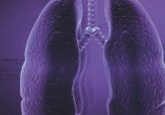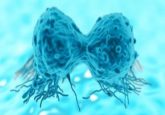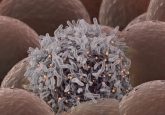First-in-world robot-assisted spinal surgery performed

Ground breaking robotic spinal surgery has enabled researchers to remove a rare tumor from a patients neck. This patient is the first in the world to undergo the complex three-part, robotic-assisted surgery.
The surgical procedure, to remove a chordoma tumor, was completed by a multi-surgeon team at the Hospital of the University of Pennsylvania (PA, USA) over a span of 2 days and more than 20 hours.
Chordoma is extremely rare; it affects only one in 1 million people each year. In this case, the patient’s specific type of chordoma, located on his C2 vertebrae, is even rarer, making treatment a challenge.
The surgery was performed in three parts. First, the neurosurgeons went through the back of the patients neck and cut the spine around the tumor to prepare for the second stage, removing the tumor through the mouth. The key to this stage was ultrasonic bone cuts, removing a piece of bone around the tumor without touching it, and without injuring the spinal cord that lay between the neurosurgeon and the tumor/spinal column. With stage one success, the team of surgeons used the surgical robot to clear a path so that the surgeon could remove the tumor, and part of the spinal column, in its entirety through the mouth.
To aid the patients recovery, a trans-oral robotic (TORS) approach for the second part of the surgery was implemented. TORS is the world’s first group of minimally invasive robotic surgery techniques to remove benign and malignant tumors of the mouth and throat.
Finally, the team reconstructed the patients spinal column using some of the patients own bone from his hip and rods to finalize stabilization of the newly built portion of his spine.
“The capability of this technology and procedure is revolutionary,” Bert W. O’Malley from the University of Pennsylvania, explained. “This surgery was ground breaking and it’s a wonderful example of how versatile TORS is for tumors in the head, neck, and now spine.”
Source: www.eurekalert.org/pub_releases/2018-05/uops-ppf050318.php





